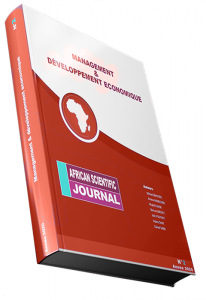Caractérisation bactériologique et profil de résistance antibiotique des échantillons d’organes de bovins, équins et volailles au Mali
DOI:
https://doi.org/10.5281/zenodo.15746831Abstract
Résumé
Au Mali les vétérinaires recourent de plus en plus à un usage accru d’antibiotiques dans le traitement et la prophylaxie des maladies animales. C’est dans ce cadre que la présente étude a été conduite à partir des prélèvements d’organes de bovins, d’équidés et de volailles acheminés au Laboratoire Central Vétérinaire de Bamako pour analyse. L’objectif principal est de détecter les bactéries pathogènes potentiellement responsables d’infections, de déterminer leur profil biochimique, et d’évaluer leur sensibilité aux antibiotiques. Pour ce faire, la méthode de diffusion en gélose selon Kirby-Bauer a été utilisée pour tester la sensibilité de ces isolats aux principaux antibiotiques couramment employés en médecine vétérinaire et humaine. L’analyse bactériologique des 11 échantillons d’organes prélevés sur différentes espèces animales (bovins, équins et volailles) a révélé une diversité notable de pathogènes. Les analyses ont mis en évidence la présence de plusieurs bactéries pathogènes, avec une prévalence marquée de Escherichia coli, Clostridium perfringens, Klebsiella spp., Citrobacter spp., ainsi que d'autres membres de la famille des Enterobacteriaceae. Ces bactéries ont été isolées à partir d’organes présentant des lésions suspectes observées lors des inspections post-mortem. Par ailleurs, des cas de co-infections et de présence simultanée de plusieurs espèces bactériennes (polymicrobie) ont été fréquemment rencontrés, ce qui complique la prise en charge thérapeutique et accentue les risques de transmission de pathogènes aux consommateurs. L’étude met en lumière la circulation de souches bactériennes multirésistantes à divers antibiotiques, notamment aux bêta-lactamines, aux tétracyclines et aux aminosides, traduisant une pression de sélection due à l’usage inapproprié des antimicrobiens dans le secteur de l’élevage. Ces résultats soulignent l’urgence de renforcer la surveillance microbiologique des produits d’origine animale et de promouvoir des pratiques vétérinaires responsables pour limiter la propagation de l’antibiorésistance. Les résultats obtenus soulignent la nécessité de renforcer la surveillance microbiologique des animaux d’élevage, de rationaliser l’usage des antibiotiques en médecine vétérinaire, et d’intégrer ces actions dans la stratégie de l’approche « Une seule santé » pour la protection de la santé publique.
Mots clés : Analyse bactériologique ; Organes animaux ; Pathogènes ; Résistance aux antibiotiques.
Abstract
In Mali, veterinarians are increasingly resorting to the increased use of antibiotics in the treatment and prevention of animal diseases. This study was conducted in this context using organ samples from cattle, horses, and poultry sent to the Central Veterinary Laboratory in Bamako for analysis. This study focuses on the bacteriological analysis of organ samples from livestock, including cattle, horses, and poultry, collected in different areas of Mali. The main objective is to detect pathogenic bacteria potentially responsible for infections, determine their biochemical profile, and assess their sensitivity to antibiotics. To this end, the Kirby-Bauer agar diffusion method was used to test the sensitivity of these isolates to the main antibiotics commonly used in veterinary and human medicine. Bacteriological analysis of the 11 positive organ samples collected from different animal species (cattle, horses, and poultry) revealed a notable diversity of pathogens. The analyses revealed the presence of several pathogenic bacteria, with a marked prevalence of Escherichia coli, Clostridium perfringens, Klebsiella spp., Citrobacter spp., as well as other members of the Enterobacteriaceae family. These bacteria were isolated from organs with suspicious lesions observed during post-mortem inspections. In addition, cases of co-infections and the simultaneous presence of several bacterial species (polymicrobials) were frequently encountered, which complicates therapeutic management and increases the risk of pathogen transmission to consumers. The study highlights the circulation of bacterial strains multiresistant to various antibiotics, including beta-lactams, tetracyclines and aminoglycosides, reflecting selection pressure due to the inappropriate use of antimicrobials in the livestock sector. These results highlight the urgency of strengthening microbiological surveillance of animal products and promoting responsible veterinary practices to limit the spread of antibiotic resistance. The results obtained highlight the need to strengthen microbiological surveillance of livestock, to rationalize the use of antibiotics in veterinary medicine, and to integrate these actions into the "One Health" approach strategy for the protection of public health.
Keywords: Bacteriological analysis; Animal organs; Pathogens; Antibiotic resistance.
Downloads
Published
How to Cite
Issue
Section
License
Copyright (c) 2025 African Scientific Journal

This work is licensed under a Creative Commons Attribution-NonCommercial-NoDerivatives 4.0 International License.





















